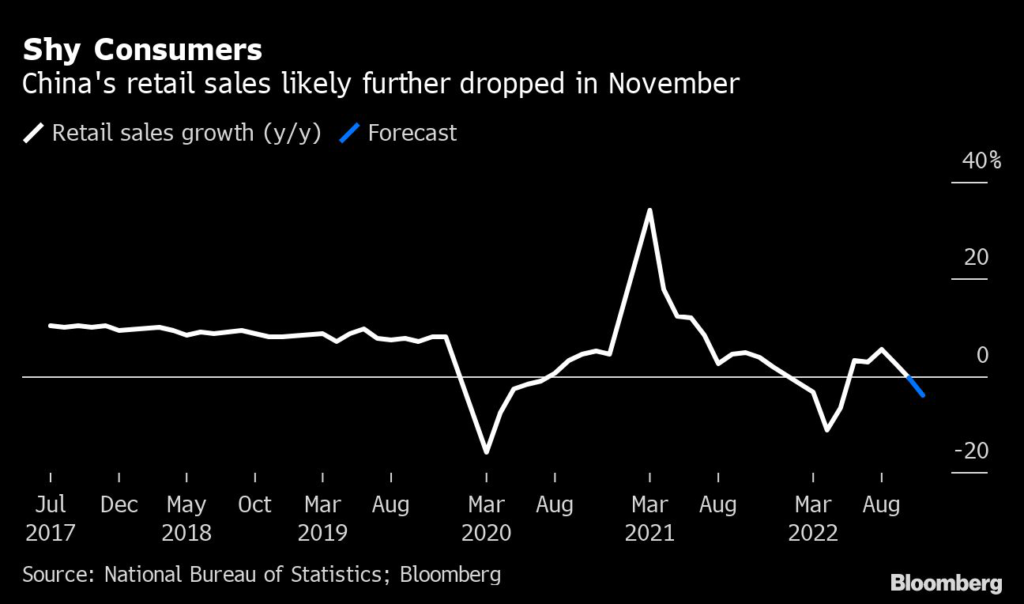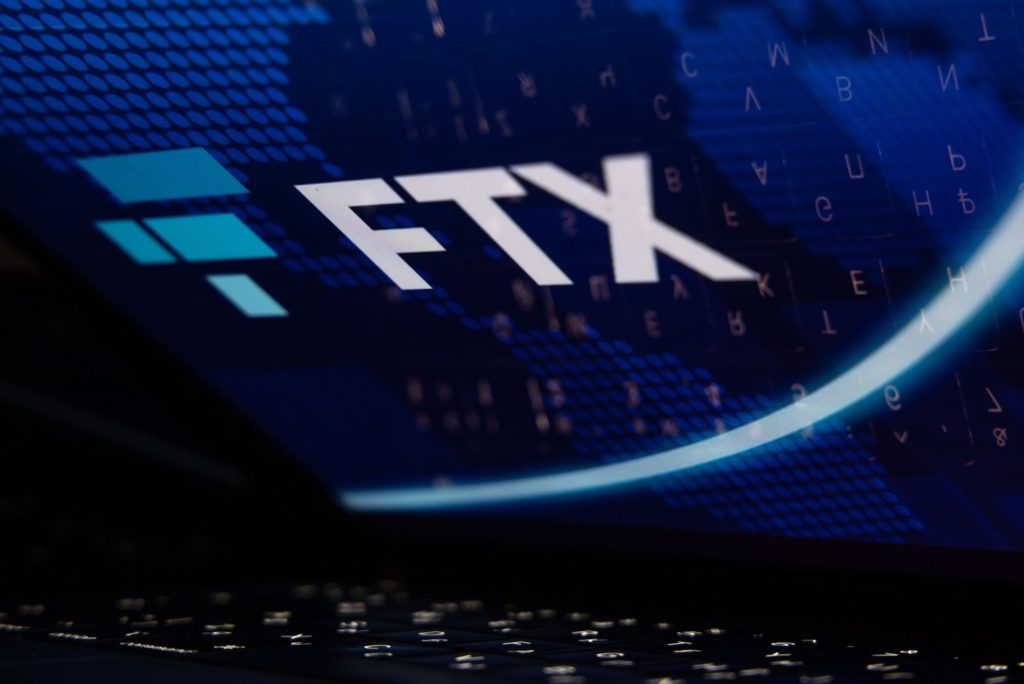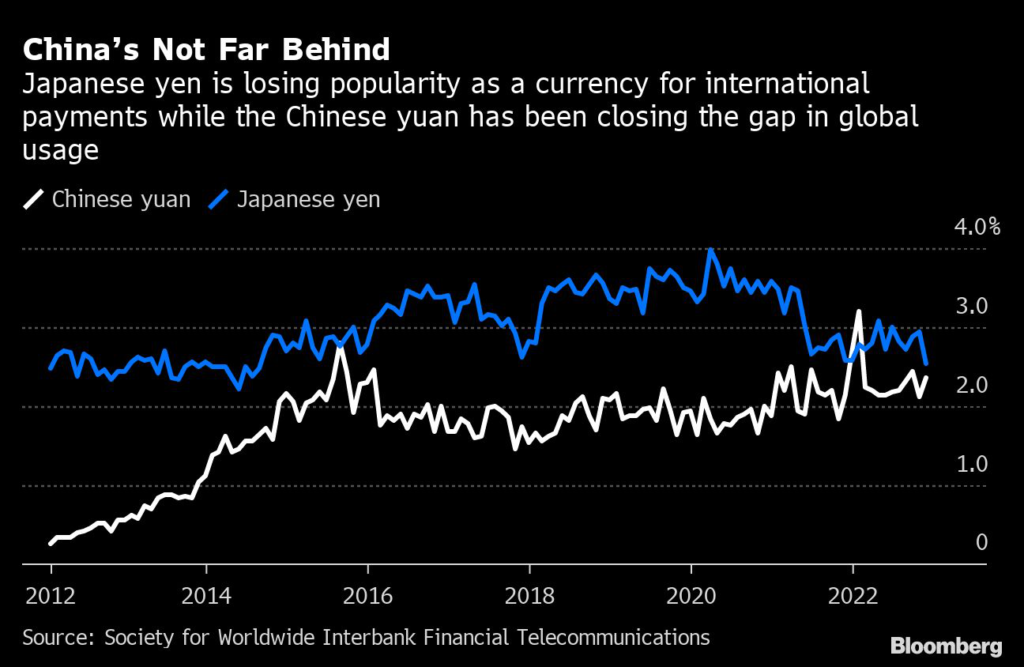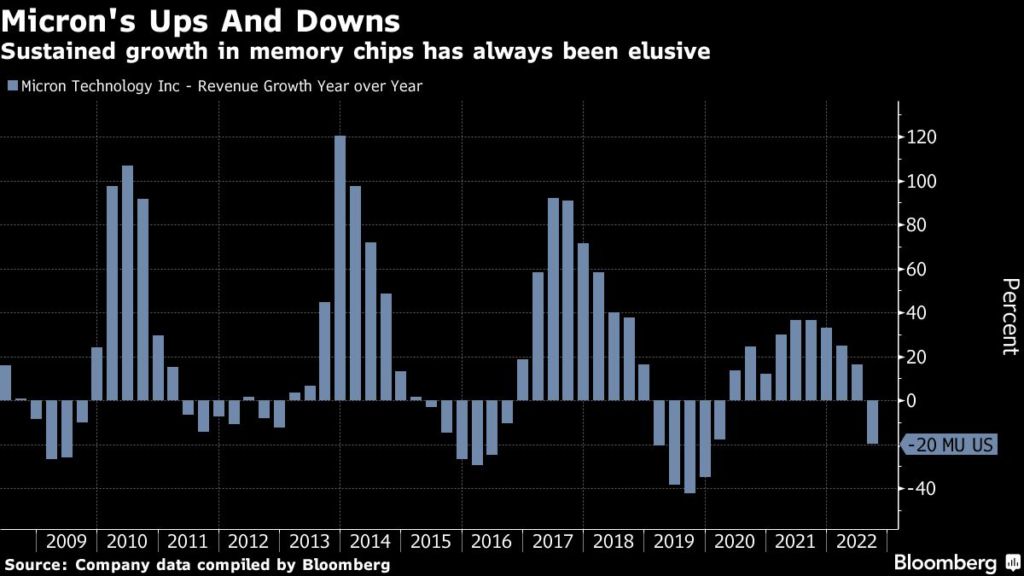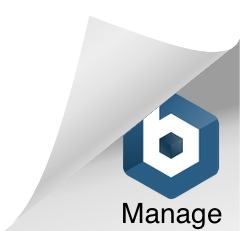(Bloomberg) — China’s key indicators this week will likely show the economy worsened in November, putting it in a vulnerable position as Beijing’s sudden pivot away from Covid Zero brings more disruption to growth.
(Bloomberg) — China’s key indicators this week will likely show the economy worsened in November, putting it in a vulnerable position as Beijing’s sudden pivot away from Covid Zero brings more disruption to growth.
Economists surveyed by Bloomberg News predict a bigger contraction in retail sales than in October, a slowdown in factory output and investment, and an increase in unemployment. The data are scheduled to be released by the National Bureau of Statistics on Thursday.
Covid infections are spreading rapidly, including in the capital Beijing, and will likely surge further in the coming weeks and months after China abandoned stringent testing and quarantine rules that helped keep cases and deaths under control for most of the pandemic.
Policymakers are shifting their focus away from Covid Zero toward boosting growth next year, suggesting more fiscal and monetary action may be on the cards. The central bank will have an opportunity to add stimulus this week when it holds its monthly liquidity operation, but economists don’t expect a cut in interest rates yet.
To better gauge China’s economic performance, here’s a guide of what to watch out for in Thursday’s data:
Weak Consumption
November saw a surge in Covid cases and strict rules including lockdowns in several cities to bring infections under control. Retail businesses reliant on face-to-face interaction, like restaurants and hotels, likely suffered the most.
Economists surveyed by Bloomberg predict retail sales declined 4% in November from a year earlier — the biggest drop since the Shanghai outbreak in the second quarter and worse than October’s fall of 0.5%.
Car sales, a key component of retail sales and a rare bright spot in recent months, took a major hit in November, plunging 9.5% from a year earlier, according to China’s Passenger Car Association.
The annual Singles’ Day shopping festival that takes place each November failed to boost retail sales. Alibaba Group Holding Ltd. didn’t disclose full sales results from its e-commerce platform for the first time, after forecasts showed an unprecedented decline.
Factory Slide
Manufacturing hubs like Guangzhou and Zhengzhou enforced snap lockdowns in November, disrupting business activity and supply chains.
Hon Hai Precision Industry Co., known as Foxconn, reported a 11.4% drop in sales last month after shipments were affected by an outbreak at its iPhone assembly complex in Zhengzhou, where lockdowns, a worker exodus and violent protests snarled operations.
Factory output likely grew 3.5% in November from a year earlier, according to economists surveyed by Bloomberg, down from 5% growth in October.
On top of the Covid disruptions, global demand for exports has plummeted, curbing manufacturing output in China. Exports from China contracted almost 9% in November, the biggest decline since February 2020.
Investment Slowdown
With most other growth engines sputtering, China’s investment in property, manufacturing and infrastructure has become a bigger driver for the economy.
Infrastructure investment likely continued to grow strongly in November as the government ramped up support for projects. Property investment probably remained weak amid an ongoing slump in the real estate market, even though authorities have recently outlined several rescue measures for the industry.
Economists predict fixed asset investment likely expanded 5.6% in the first 11 months of the year compared with the same period last year, down from 5.8% in the January-October period.
Unemployment Climbs
Jobs figures remain a key focus as businesses in China have been forced to shed workers, freeze hiring or even close their doors — temporarily or permanently.
The surveyed unemployment rate likely climbed to 5.6% after staying unchanged at 5.5% for two months. It’s also above ceiling of under 5.5% the government set for all of 2022.
Whatever the headline figure may be, further details about the jobless rates for the most vulnerable groups — including young people and migrant workers — will shed more light on the true extent of unemployment pain.
The surveyed jobless rate for those aged 16-24 hit a record high of 19.9% in July and remains elevated at 17.9%.
Policy Loans
The People’s Bank of China will have another opportunity to ramp up support for the economy on Thursday after it earlier cut the amount of cash banks must hold in reserve, injecting liquidity into the market.
Four of the seven economists surveyed by Bloomberg expect the central bank to fully roll over 500 billion yuan ($71.7 billion) worth of maturing one-year policy loans, known as the medium-term lending facility. Another two predict a slight net withdrawal of 100 billion yuan, and one sees a net injection of 300 billion yuan.
The PBOC may want to maintain ample liquidity, analysts say, after the Covid Zero pivot spurred a rapid sell-off in government bonds and roiled the credit market.
More significant easing, though, is likely off the table. The PBOC will refrain from lowering the rate on MLF loans, and instead keep it steady at 2.75%, according to all 14 economists surveyed.
The cut to the reserve requirement ratio for banks, though, has led to higher expectations for a reduction in the five-year loan prime rate — a reference for mortgage rates. That could be trimmed later this month, even in the absence of a policy rate cut.
–With assistance from Tomoko Sato and Wenjin Lv.
More stories like this are available on bloomberg.com
©2022 Bloomberg L.P.

